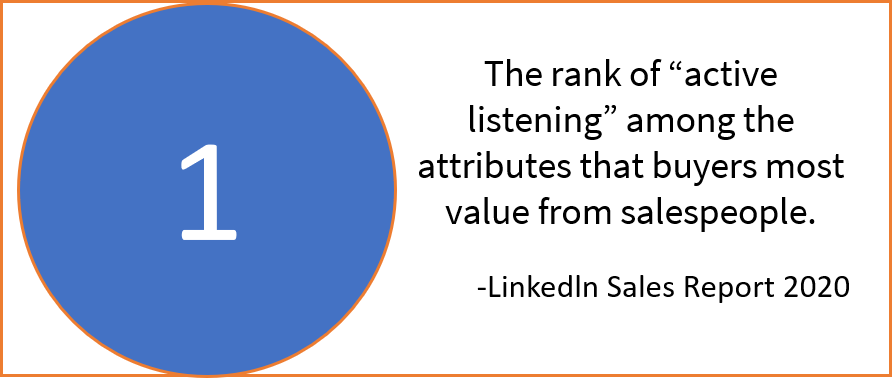10 Powerful Tips for Successful Virtual Selling
- Posted by Rajan Gupta
- Categories Fail-Safe & Agile Strategy
- Date February 16, 2021
- Comments 0 comment
More than a year has passed now and we’re still not living a normal life. The Covid-19 pandemic has acted as a catalyst to change every aspect of our work environment. For the last couple of months, most of us have been working from home and relying on video calls for meetings—basically trying to manage all the work-related challenges in the face of uncertainty.
Of course, the companies too are not running the way they used to be in the pre-Covid days. With the shift to a new culture to work from home, the ways to collaborate with the employees or progress tracking, or simply maintaining flexibility between job and household tasks have drastically changed. Virtual selling has been seen as becoming a backbone of successful sales strategies. The sales conversations, today, are taking place on live software like Zoom, with buyers and sellers in different physical locations. And as a matter of surprise, the tide is turning: digital self-service and remote rep interactions are gradually becoming dominant elements of B2B sales strategy. In fact, the recent survey by Gartner indicates a remarkable 23% of CSOs plan to permanently shift to virtual sales from field sales.
Why Virtual Selling is Important?
We all know that the pandemic has accelerated the shift towards virtual selling. However, there is one more important factor as to why a virtual selling needs to be adopted by companies and train & coach their sales team accordingly.
Yes, you guessed it right! Consumer experience is everything and so does his preference. Technology transforms choice and so, it would not be wrong to say that the consumers, with the support of 4G or 5G networks and powerful mobile devices, no longer feel the need for the face-to-face communication to take place. Remote selling emerges to be a more feasible and practical option to them.

It is obvious that some of these changes are temporary, but some of them are here to stay, pointing towards the digital-adoption momentum. This structure, additionally, is advantageous for the business too. From lowering travel costs to increasing employee productivity by reducing other overhead costs, a remote selling structure impels the businesses to prepare themselves for the next wave of the digital economy.
Key Challenges in Adapting to Virtual Sales
Let’s accept it; it must have not been an easy move for you when you had to adapt to virtual selling model from having a centralized sales force to manage, from time immemorial, to keep the business going. Many challenges must have come in the way to maintain trust and rapport with the sales teams. No wonder, working remotely is equally gruelling for the sales teams as well.
Here are the four most common challenges that emerge when managing a remote sales team:
- Lack of Proper Communication: In a virtual workplace model, the primary mode of communication isn’t face-to-face. This could result in regular conflicts among team members, feelings of isolation due to reduced interaction among team members, missed task deadlines, and so on.
- Improper Management of Projects: Planning and monitoring are essential for any virtual project. Needless to say, the efficiency to strategize a project increases over a regular meeting when you are physically present in the office. However, the set-up of a virtual meeting makes it difficult for the project to be properly managed.
- Lack of Productivity: Home is definitely not an ideal place to work from. Why? There are so many distractions—facing sudden power or Wi Fi outages, inappropriate work schedule, etc. —that could directly impact your speed, making you less productive. Hence, the result is that you lose track of time when working and sit for several more hours than required.
10 Proven Tips & Techniques for Successful Virtual Selling
It’s time to go where your customers live: online. If you pride yourself on being where your buyers are, why aren’t you online yet?
-Jamie Shanks
You have switched to virtual meetings and can manage the set-up despite facing various challenges. Imagine now that you are able to double your sales meeting per week, not losing anything on customer satisfaction, while increasing your sales. No! You are not daydreaming because you can achieve it all by following the below 10 proven guidelines to succeed with virtual sales.
#1- Select your Tools Carefully
Over the last few months, you must have had your experiences with the various video calling/conferencing software. To name a few, Zoom, Google Meet, Microsoft Teams and WebEx are the popular ones. Which one did you find the best?
Choose your preferred option after comprehending all the features and master it to ensure your meetings run smoothly. Once you have your video-conferencing software in place, you need to find out how you will present yourself. Remember to make sure that your camera has a good recording quality. Also, start to pay attention to your body language so that you can create a strong visual connection with your client/customer.
#2- Work to Build a Strong Communication Strategy
Communicating via a screen can become extremely challenging. Your time to connect with your potential client is limited and so, attracting and retaining his attention is way too demanding. Thus, having a powerful communication strategy is a necessity. It may mean sending frequent emails, making follow-up calls, or holding online meetings regularly. To cut a long story short, it means keeping in touch with your clients. This can be done when you are 100% committed to your profession.
#3- Practice Listening Attentively to your Clients

Listening actively to your clients is a prerequisite to build a strong and long-lasting relationship. Hence, you should really try to walk a mile in your client’s shoes and make them feel the same way during your interactions. Talk about ideas that will be of value to your client. Make him the centre of attention and you will start observing a difference in their approach to talk to you.
#4- Strike a Balance between Social Media & Virtual Selling
Sellers who have embraced social media are creating new opportunities that totally bypass traditional sales channels. It’s about good selling — using all the tools that are available to you today.
-Jill Konrath
Social media can be proved as an effective tool to virtually sell your product/service. You can establish and maintain your visibility by reaching to a broad audience. Also, since this vehicle allows two-way communication, you can interact with your clients/customers and immediately know how they are perceiving your brand. Written posts, short videos, and stories can help you to incite interest in your client’s mind.
#5- Use an Online Tracking Tool

Communicating virtually doesn’t mean that you will get fewer leads or options to grow your business. It just indicates that you have to alter your ways to pursue your leads more relentlessly by taking solutions from technology. You can send materials to your potential clients by using a tracking tool which can help you to know the details in numbers. For example, you can send emails and track the results by knowing who read it, who interacted with the content you sent, and so it. With the provided information, you can plan the next steps of your discussions with your clients.
Thus, tracking tools bring value to you and your client by making you both have a richer and meaningful conversation almost immediately.
#6- Keep in Touch with your Past Customers
Make sure your client is not just a name on the sales agreement. Even if the business relationship comes to an end due to some reason, don’t cut the ties. A business relationship is about gaining trust and once you can attain it, remember to maintain the relationship for long-term. You never know how and when your client needs your services again in the next few years. Along with it, there is always a scope of gaining references from them of other prospective clients. Hence, a quick email doesn’t take much time and holds the potential to go a long way.
#7- Connect with the Client

Establishing a strong relationship with the client always reaps benefits in the long-run. Doing research beforehand to know the needs of your clients helps the client to put trust in your offering. Additionally, being authentic and genuine by showing the client that you are here to help and not just sell your product strengthens the connection between you and your relationship. In the virtual meeting context, particularly, make sure to turn your camera on, smile, and dress like you would do in a personal meeting.
#8- Make Customized Presentations to Understand Customer Needs
Getting your client engaged in a virtual meeting is difficult. It is recommended to incorporate some tools that make your presentation interactive with your client instead of sharing plain content.
One of the ways to hold the attention of the client can be through visualization of his needs. Use an interactive sales deck—maybe adding a questionnaire that can initiate a conversation about his needs and objectives or a calculator to know the impact of your product on the client’s revenue. This is a powerful strategy as, by the end of it, you can nail down his needs and create a common ground for both. Also, it gives the client the confidence that it’s you who will adapt your product according to his needs and not they need to do this exercise.
#9- Wrap the Touch-Points
Your sales meeting has been successfully done and you have sent all required educational resources. What’s the next step? It is to map out all relevant touch-points within the process that wraps around the meetings. This includes sales-generated emails, phone calls, video calls, follow-up emails and any and every document you will be using with your prospects. The objective is to actively stay in the mind of the client even after the meeting. The above-listed touch-points can not only help to differentiate your company with your competitors but also increase your chances to close the deal in a shorter duration of time.
#10- Alignment of Marketing & Sales Teams
As professionals in every industry thrive, aligning marketing and sales is a good idea to bring value to each process involved in sales. You need to ensure that the marketing and sales teams are working to achieve the same goals. Marketing must move beyond creating & building content primarily used in the sales process while sales should ensure not only to use the content but provide regular feedback on what is working and what is not. A fully aligned sales and marketing team will eventually help to uncover unique insights that will fine-tune and optimize various sales and marketing strategies. At the same time, it will take the business to new heights by providing new opportunities and increase in revenue.
You may also like

10 Compelling Ways to Why you should Integrate AI into your Sales Plan

12 Tips to Prosper your Career Goals amidst the New Normal


